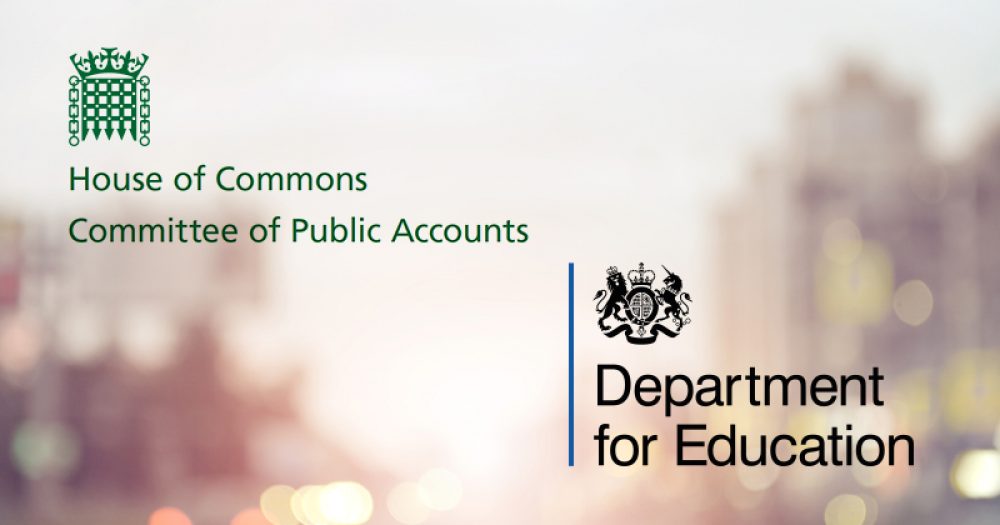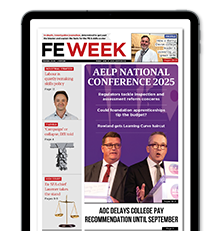The Public Accounts Committee has today published its progress report into the apprenticeship reforms that were introduced in April 2017.
Members of the committee grilled a number high-profile government officials on the affordability of the programme in March following a National Audit Office report earlier that month that warned it is not financially sustainable.
The PAC’s final report dissects the evidence given, offers its view on how the apprenticeship reforms are going, and gives six recommendations for the DfE and Institute for Apprenticeships to act upon.
-
DfE should assess whether there are enough level 2 standards
The PAC said the way the programme is evolving risks leaving behind people with lower skills and those from disadvantaged communities.
It reported that the programme is now “more heavily weighted towards higher-level apprenticeships”, as around 20 per cent of the new apprenticeships standards are available at level 2, compared to more than 40 per cent on the old-style frameworks previously available at this level.
The report added that the proportion of apprenticeship starts among people from disadvantaged areas has fallen, partly because of the growth in starts at level 3 and above.
The PAC wants the department to assess whether there are enough level 2 standards to “allow school leavers or those with fewer skills to easily access apprenticeships”, and report back within six months.
-
More stretching diversity targets need to be set
The DfE’s approach to widening participation among under-represented groups has been “inadequate”, according to the PAC.
Despite this being one of the apprenticeship programme’s four main objectives, the committee believes the targets for apprenticeship starts among the black, Asian and minority ethnic population, and among those with a learning difficulty, disability or health problem, are “unambitious in that they are below the respective levels of these groups in the working-age population”.
Additionally, there are no gender-based targets for the programme despite the fact that only 9 per cent of people taking STEM subjects are women, a position that the DfE’s permanent secretary Jonathan Slater has admitted is “hopeless”.
The PAC wants bigger targets for 2021 and beyond, as well as an evaluation of the impact of the DfE’s efforts to attract more women into STEM apprenticeships.
-
Evaluate the impact of interventions at failing providers
“Too many apprentices are being trained by sub-standard providers,” the PAC said, after finding around a third of apprentices covered by Ofsted inspections in 2017/18 were being trained in providers rated as ‘inadequate’ or ‘requires improvement’.
It added that the “poor quality” of some providers contributes to a situation where over 30 per cent of apprentices fail to complete their apprenticeship successfully each year. In 2016/17, this equated to more than 132,000 apprentices.
And since 2014/15, a growing proportion of training providers have fallen below minimum standards for their apprenticeship achievement rates.
The PAC points out that the ESFA may issue these providers with additional conditions of funding or extra contractual obligations. Ultimately it can terminate providers’ contracts, but this is “extremely rare” — it has taken this step with only 11 providers in the past five years, according to the PAC.
-
DfE needs to set out how small employers can benefit fully from the reforms
The PAC said the apprenticeships programme is not supporting smaller employers “well enough”.
It explained that while levy-paying employers have direct access to their funds via an online system, to pay for apprenticeship training and assessment, smaller employers currently access apprenticeships via training providers who are funded through contracts with the ESFA.
The DfE expects all small employers to be on the online apprenticeships system with levy-payers next year to access training funds directly.
But until then and under the current arrangements, if levy-payers spend “more than around half of their funds, the ESFA will have less money available to fund apprenticeships among smaller employers” and while levy-payers have spent a “relatively small proportion of their funds so far, training providers are already reporting that they do not have enough funding to offer as many apprenticeships to smaller employers as they would like”.
The PAC wants the DfE to consider “protecting” funding for non-levy-paying employers.
-
Strengthen assessment arrangements for apprentices
The PAC said they do not have “confidence” in the arrangements for assessing apprentices.
Under the standards, each apprentice is assessed by an independent third-party at the end of their apprenticeship. However, in late 2018, 19 standards had no end-point assessment organisation in place, and 98 standards had only one assessment organisation. In addition, the arrangements for checking the quality of end-point assessments are “muddled, and it is unclear whether the numerous bodies involved provide a consistent level of assurance”.
The committee wants the ESFA and Institute for Apprenticeships to write to them within six months to “provide more detail about the coverage and capacity of end-point assessment organisations” and “set out what they will do to streamline and strengthen quality assurance arrangements in order to give greater confidence that end-point assessments are robust, fair and consistent”.
-
DfE needs to set out what productivity gains it expects from the programme
The department uses a ‘skills index’ as a proxy measure for the impact of apprenticeships on productivity, which takes account of the number of apprenticeship starts, apprentices’ progression into jobs, and the subsequent increase in their earnings.
However, the PAC said the DfE has not set out what improvement in the headline value of the index would constitute success.
It recommends that the department should “publish the level of improvement in the skills index that it is aiming to achieve in the short and long term”.









It is unfortunate that the PAC seems to have tarred all apprenticeship programmes with the same brush. Training providers and End Point Assessment organisations have very different and diverse programmes to assess and evaluate during the apprenticeship programmes which can vary from weeks to years. Each programme and sector has many different challenges from the other and to set targets to cover all programmes will be folly.
“More stretching diversity targets need to be set”
for “black, Asian and minority ethnic population, and those with a learning difficulty, disability or health problem, are “unambitious in that they are below the respective levels of these groups in the working-age population”. have in the past proved to be an unachievable target unless a substantial amount of funding is allocated to address the shortfall across all diverse groups, especially in the construction industry. The PAC need to include sector experts, before they set new targets and draw on the experience of those that have successfully serviced this sector for many years. The Building Engineering Sector has many successes and constantly achieve high success and retention rates, many providers can only ask for ethnicity information from new starts, some starts decline which will skew the actual in learning figures.
I think there needs to be some further sector by sector analysis before any sweeping targets are set as different sectors attract different potential learners from all backgrounds.
As for the End Point Assessments (EPA), in the Electrical installations sector the EPA has been in place for a number of years and is recommended by the sector (employer group) it represents, this has proved to be successful and although there is always room for improvement it should be recognised by the PAC that there are some safety critical EPA’s that cannot be aligned to other EAP’s due to competency levels being diluted and causing harm or property damage.
Level 2 qualifications have there place in many sectors but where Level 3 is required as a competency requirement this must be upheld for the reason above.